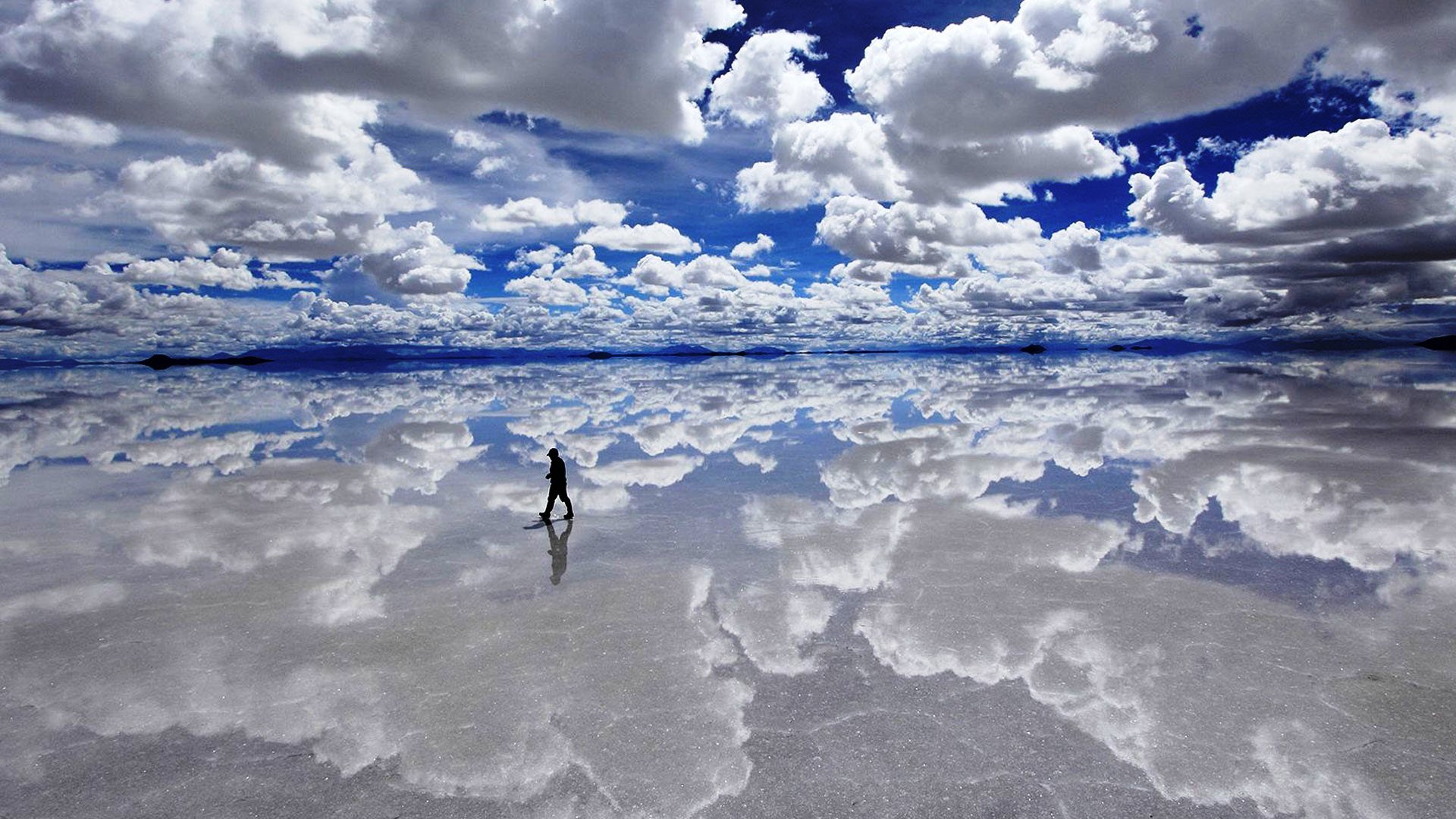
It’s like stepping on a white ocean, Bolivia’s Salar de Uyuni is one of the flattest and largest surface on Earth.
Don’t be surprised if you walk along the plain and happened to see a perfect reflection of yourself on the plain. Salar de Uyuni is also the world’s largest mirror. When the boundless plain of white cemented salt in the mountain of Bolivia collects puddles of water, a dazzling, almost symmetrical visual floods your eyesight, threatened to take away perspectives. During the rainy season, the salt flat is covered by shallow water. This skin-deep water reflects the vast skies, huge, bubbly clouds and sometimes, even animals of Bolivia. The result is a fusion of heaven and earth into one staggering landscape.
Some claimed that a walk down Salar de Uyuni is like trekking across the moon.
Salar de Uyuni is not only extolled with its grandeur beauty, it is also rich in salt and lithium.
In the primeval times, Bolivia’s Salar de Uyuni existed as a mere tiny part of a larger lake that covered near to the crest of the Andes. Over the hundreds of thousands of years, the waters slowly evaporated, leaving the lakes to dry up with high salt content. The shallow pool of brine now contains 50 to 70 percent of the earth’s reserve for lithium, an essential component to making electric batteries.
Over the years, Salar de Uyuni has welcomed many tourists and miners from all walks of life to come here. It is also an important transport route during the dry seasons.
Inspired? Here’s how you can make your travel happen:
TripZilla Travel Packages to South America
Image credits: http://bit.ly/1haMUGo





